Evacuation Day
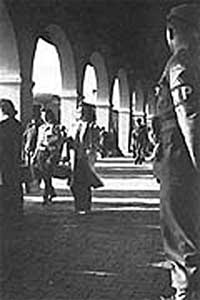 On April 1st, 1942 the evacuation notices were posted all over the city of San Diego. It was April Fools Day, but this was worse than a cruel joke. Simply put, everyone of Japanese ancestry, citizens or not, were to be at Union Station on April 7th. There was no mention of where they would be taken, nor when they might hope to return. They had one week to sell, store, or give away all but one bag that they could carry. 70 % of them were American born citizens and the rest were legal aliens, unable to become citizens because of racist exclusionary laws directed at Asians. In one week they would be forced to leave the only home most of them had ever known--their only crime was in having the wrong ancestors. On April 1st, 1942 the evacuation notices were posted all over the city of San Diego. It was April Fools Day, but this was worse than a cruel joke. Simply put, everyone of Japanese ancestry, citizens or not, were to be at Union Station on April 7th. There was no mention of where they would be taken, nor when they might hope to return. They had one week to sell, store, or give away all but one bag that they could carry. 70 % of them were American born citizens and the rest were legal aliens, unable to become citizens because of racist exclusionary laws directed at Asians. In one week they would be forced to leave the only home most of them had ever known--their only crime was in having the wrong ancestors.
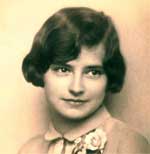 For Clara Breed, the children's librarian of the San Diego Public Library it was a sad time.saying good bye to young people she had known all through their childhood. She admitted having a special affection for these children who came to her summer reading programs and all through the year, borrowing books by the armsful. She had known Fusa and her friend Chiyo since they were little girls. Now they were supposed to graduate from high school and go on to college. But that was not to be. Clara remembered that week in an article in Library Journal. For Clara Breed, the children's librarian of the San Diego Public Library it was a sad time.saying good bye to young people she had known all through their childhood. She admitted having a special affection for these children who came to her summer reading programs and all through the year, borrowing books by the armsful. She had known Fusa and her friend Chiyo since they were little girls. Now they were supposed to graduate from high school and go on to college. But that was not to be. Clara remembered that week in an article in Library Journal.
WAR CAME LIKE A HURRICANE
"To the children and young people of Japanese ancestry.born in this country and educated in our schools, the war came like a hurricane, sweeping away their security, their friends, their jobs, sometimes their fathers into internment camps, and finally their schools and homes and liberty. One day they were living in a democracy, as good as anyone or almost, and the next they were "Japs" aware of hate and potential violence which might strike with lightening swiftness."
Clara E. Breed..Library Journal 2/1/43
Knowing that she could do nothing to stop the evacuation, Clara was determined to remain a lifeline to her young friends. All that week as "her children"- as she called them- came to return books, turn in their cards, and say good-bye, Clara handed out postcards, telling them to write so that she would know where they were- and promising to send them books and anything else they might need.
On the final day- the day they were leaving Clara brought more cards and books to the train station.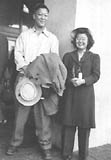 She took photographs of Fusa and her brother Yuki Tsumagari, an aspiring medical student who would manage to work his way through college by working as a farm hand to pay his tuition. Fusa, the baby of the family was ready for college, too. But that would have left her mother alone...since her father had been taken away on the night of Pearl Harbor. Mr. Tsumagari had made a success in America. But being a successful business man was enough to make him a suspect - imprisoned for the duration of the war. In the years ahead, Clara clipped crossword puzzles for Fusa , sent her clothes, books, her own shorthand book, and among other things, encouraged Fusa to plan for the future. She took photographs of Fusa and her brother Yuki Tsumagari, an aspiring medical student who would manage to work his way through college by working as a farm hand to pay his tuition. Fusa, the baby of the family was ready for college, too. But that would have left her mother alone...since her father had been taken away on the night of Pearl Harbor. Mr. Tsumagari had made a success in America. But being a successful business man was enough to make him a suspect - imprisoned for the duration of the war. In the years ahead, Clara clipped crossword puzzles for Fusa , sent her clothes, books, her own shorthand book, and among other things, encouraged Fusa to plan for the future.
 On that last day in the station Clara took a photo of little Jack Watanabe who liked comic books and nine year old Katherine Tasaki, who loved paper dolls and pen pals and dear Miss Breed. She did not see Margaret and Florence Ishino- though they were there. Seventeen-year old Margaret was busy caring for her little six year old sister Florence and their teen-aged brother. Maggie's mother had just had a baby, so her parents and little Thomas were loaded into the first train. Leaving Florence and her older brother in Margaret's care. Maggie recalled how when they arrived in Santa Anita a gruff speaking guard pointed out that she had lost her number tag. Terrified, Maggie was removed from the line. On that last day in the station Clara took a photo of little Jack Watanabe who liked comic books and nine year old Katherine Tasaki, who loved paper dolls and pen pals and dear Miss Breed. She did not see Margaret and Florence Ishino- though they were there. Seventeen-year old Margaret was busy caring for her little six year old sister Florence and their teen-aged brother. Maggie's mother had just had a baby, so her parents and little Thomas were loaded into the first train. Leaving Florence and her older brother in Margaret's care. Maggie recalled how when they arrived in Santa Anita a gruff speaking guard pointed out that she had lost her number tag. Terrified, Maggie was removed from the line.
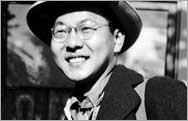 Clara took a picture of Tets Hiraski, the most senior of her correspondents. He was a 22 year old college man by then.but Clara had known him since he was a small boy of 8 and his father left him in the library for the day while he went out to work 16 hour days on a fishing boat. Mr. Hirasaki knew the boy would be safe in the library with Miss Breed. Clara took a picture of Tets Hiraski, the most senior of her correspondents. He was a 22 year old college man by then.but Clara had known him since he was a small boy of 8 and his father left him in the library for the day while he went out to work 16 hour days on a fishing boat. Mr. Hirasaki knew the boy would be safe in the library with Miss Breed.
Although there is no photo, we also know from a letter that Clara saw Elizabeth Kikuchi there in the station as well as Louise Ogawa who would become one of the most prolific correspondents.
Later in an article in Horn Book, Clara wrote.
"The scene was unforgettable...the station was packed, the platform overflowing, but there was no confusion, not a baby cried, not a voice was lifted in irritation or complaint. The boys were dressed in boots and dungarees and plaid shirts, while the girls with their slender figures looked dainty and feminine in slacks. Babies were delectable in soft pink and blue, while one little toddler in trousers and coat of bright red looked like an animated doll. The soldiers, who seemed to have been chosen for their height, towered above the crowds, but their authority was courteous and considerate and one saw in the faces honest American interest in the human spectacle, and sympathy for the participants. Only at the very last, when the procession filed slowly toward the train, did one old woman break down and sob uncontrollably."
Clara Breed, Americans With the Wrong Ancestors, Horn Book
While I was doing my research, scrolling through microfilm from the San Diego Union - as the newspaper was called then, I sat for a long time staring at the photograph of Union Station on that day in April 1942. 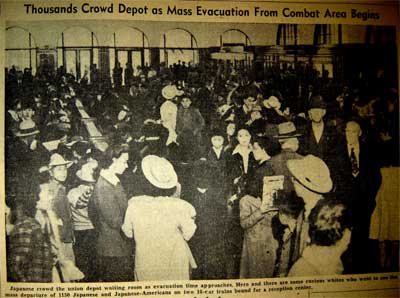
Although I could not identify anyone, I knew that somewhere in that photo all the young people I was writing about, all the correspondents, were in that photo--as was dear Miss Breed. Perhaps at that moment frozen in time, she was handing Tets a letter, the letter that was not discovered until the week my own book was going to press. It is the only known letter written by Clara Breed that survives and for more than 60 years it was tucked away with Tets' treasures. I want to read it to you because I think it says so much about Clara Breed.
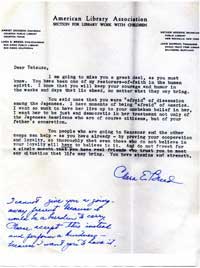 It is written, by the way, on American Library Association paper, because during that spring Clara became the chair of the Newbery-Caldecott committee, the committee that would eventually name Make Way for Ducklings and the Matchlock Gun as winners. But on that unhappy day, Clara handed this letter to Tets (click on it to make it large enough to read) . It is written, by the way, on American Library Association paper, because during that spring Clara became the chair of the Newbery-Caldecott committee, the committee that would eventually name Make Way for Ducklings and the Matchlock Gun as winners. But on that unhappy day, Clara handed this letter to Tets (click on it to make it large enough to read) .
I asked each of the people I interviewed what would you want people to know about that dark time in our history?
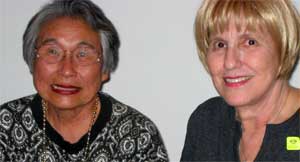 It was Margaret Ishino who gave me a quick but eloquent reply, "We need more Miss Breeds!" It was Margaret Ishino who gave me a quick but eloquent reply, "We need more Miss Breeds!"
|








